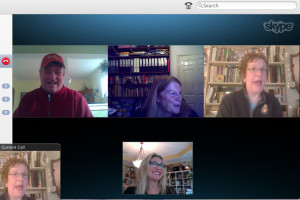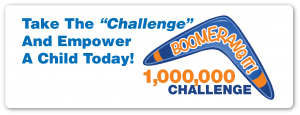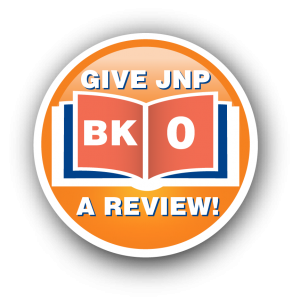 Writing Team assembled—now, start with the outline of responsibilities and expectations.
Writing Team assembled—now, start with the outline of responsibilities and expectations.
Bringing together successful, published children’s authors to work creatively in a real-time, face-to-face format was an unknown—at least to the writers, not to me. I have always worked creatively in a team structure my entire 24+ yr career in creative communication arts and design, which included advertising writers. Children’s story-writers (I discovered in the interview process) are more of an individual/introverted creative bunch, not necessarily working with other creative writers in real-time, so, I had to make sure this was going to be a comfortable working scenario.
To begin the writing process, I had predetermined a Lead Writer to head up the assignments and keep the writing on track. There would be a lot of responsibility with this role: organization and leadership, including exceptional creative writing skills were key. The additional creative writers, including myself, were outstanding complements to the creative development process of the storylines, and we all worked out, together, our comfort level of how we wanted to contribute—all this needed to be strategically orchestrated in order for the system of creative writing to begin, and then flourish; otherwise, it would not work!
 This is how we began the writing process:
This is how we began the writing process:
- Create a new Google doc(s) for the full Creative Writing Team and Dona (CWT+) to post to–organize well with labels, and ‘shared folders’ for the Team.
- Creates G-doc for the new JNP work-in-progress book, “copying and pasting” the relevant information from Dona’s original Phase 1 Project Scope description and any other subsequent updates, highlighting any outstanding questions posed by Dona and Creative Writing Team members. This will form the foundation of the Creating Writing Teams’ Idea Space.
- Communicates with the CWT+ — the new G-doc for the first storybook is ready for their responses and questions:
– What conditions allow you to be at your best as a collaborating writer?
– How frequently do you prefer to meet in “real time”?
– Besides e-mail and the G-docs for asynchronous contact, what type of live interaction format do you prefer (e.g., phone conference, video conferencing, etc.) - We voted weekly SKYPE video calling. Optimally, this call takes place 3-5 days after CWT+ members are sent access to the emerging book G-doc. The LW conveys the purpose of the call: to improvise on, brainstorm from, expand the emergent book’s core ideas already offered on the G-doc.
- Convenes the CWT+ teleconference, acting as an “idea catcher” and creative catalyst to stimulate further thinking about the emergent book. During the one/two-hour call, Dona will scribe, typing the emerging new ideas directly on the G-doc.
During the book development weeks, the Lead Writer:
- Cultivates a balance between a shared transparency essential for fruitful and enjoyable collaboration as a cohesive JNP CWT+ and the unique creative genius of each individual team member
- Monitors /invites additional contributions from the CWT+
- Poses new questions on the G-doc to clarify or expand ideas, details, nuances
- Posts in-progress drafts of the emerging story on a separate G-doc
- Asks CWT+ for regular feedback on drafts
- Convenes additional live teleconference meeting(s) as needed by the LW and/or requested by the CWT+ or Dona (while the book writing is in progress).
Next steps:
Invites team to attend idea-generating teleconference call. Assigns pre-teleconference tasks:
- Reply to Dona’s questions on Idea Space G-doc
- Share responses to other items described by Dona (G-doc)
- Add new insights/ideas/inspirations that have already occurred/are occurring to each writer (G-doc)
Final Steps: Writing/Asking for Feedback/Revising/Submitting
- Reviews all contributions of Creative Writing Team, focusing especially on the ideas submitted to the Idea Space Google Doc. Combines, adds, and revises the contributions of the Creative Writing Team into the emerging story draft, according to the LW perceptions of the story.
- Writes a rough draft of the story-in-progress, incorporating as many of the ideas submitted by the CWT as possible.
- Pastes rough draft into a new Google Doc and invites CWT to write feedback comments.
- Facilitates CWT+ feedback session via teleconference
- Revises story-in-progress, using CWT+ feedback as guidance.
- Submits good draft of story to Dona to share with her (other) team of experts.
- Does final revision/edit/proofread of finished story and submits to Dona.
This process, with a little tweaking here and there, has been our successful basis over the last year in the creative development of the story series. To date, we have competed 4 full stories, and have laid out the plot foundation of the next 2. This is not to say it has taken a year to ‘just’ develop 6 stories—the JNP Advisory Committee had directed us to also supply a PARENT (kids 5-12) and EDUCATOR (grades 1-2 and 3-4) Resource Kits with activity guides and full unit-guide curriculum (CCSS), and it has taken us 3 months to flesh out the format and outlines—now we are doing both in conjunction. It’s all great work, and we can’t wait to share it with you soon!
~ ~ ~
Note: This Blog is a chronological diary of a start-up-company—The JNP Project’s Journey—reading it from the start, will broaden your understanding of the path we are on, together, and hopefully, positively influence you in some way!
FYI Tip: Take time to carefully plan out your creative process and responsibility assignments—in the end, it really makes for a superior, clearly communicated working environment.
Other blogs relating to writing:
#10: Assembling A Writing Team… A “Team” of Writers. http://adventurestoawesome.org/10-assembling-a-writing-team-a-team-of-writers/
#8: Chapter Books. Not Storybooks! http://adventurestoawesome.org/8-chapter-books-not-storybooks/
#11: HOW MANY TEAMS DOES IT TAKE TO BUILD A START UP? http://adventurestoawesome.org/11-how-many-teams-does-it-take-to-build-a-start-up/





No comments yet.